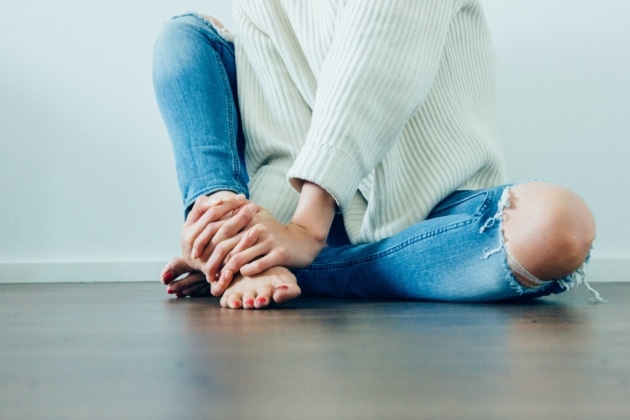Welcome to our comprehensive guide on foot health! Our feet are the foundation of our daily movements, yet they often get neglected in our self-care routines. From walking and running to dancing and jumping, we put a lot of pressure on these hard-working limbs every day. Unfortunately, this can lead to various foot problems that may cause discomfort or pain. But don’t worry – with simple tips and tricks, you can keep your feet healthy and happy! In this article, we’ll cover everything you need to know about foot anatomy, common foot problems like plantar fasciitis and bunions, how to take care of your feet properly, footwear tips for different occasions, when it’s time to seek medical attention – and much more. So let’s kick off those shoes (if possible) and dive right into the world of fantastic feet!
Foot Anatomy
Your feet are more complex than you may think! They comprise 26 bones, 33 joints, and over 100 muscles, tendons, and ligaments. All these components work together to provide stability and mobility for your body.
The foot is divided into three main parts: the hindfoot (heel), midfoot (arch), and forefoot (toes). The heel bone supports the weight of the body while standing or walking. The arch in the middle of the foot acts as a shock absorber that distributes pressure evenly along the foot’s surface. The toes help with balance and propulsion during movement.
Each part of your foot has its unique structure that serves a specific purpose. Understanding how your feet work can help you take better care of them and prevent injuries from occurring.
Common Foot Problems
Our feet are an essential part of our body. They bear the weight of our entire body and help us move around. However, they can also experience various problems that can cause discomfort and affect their daily routine.
One common foot problem is Plantar Fasciitis, which causes pain in the heel or bottom of the foot due to inflammation in the plantar fascia tissue. It often occurs due to overuse or wearing improper footwear.
Bunions are another common issue where a bony bump forms on the joint at the base of your big toe, causing pain and difficulty walking. This condition may be genetic or caused by wearing tight shoes regularly.
Ingrown toenails happen when a nail grows into the skin surrounding it, causing swelling, redness, and infection if left untreated. Improper trimming techniques and wearing tight shoes can lead to this problem.
Heel spurs occur when calcium deposits build up on your heel bone’s underside leading to sharp pains while standing or walking for long periods.
It is crucial to take care of your feet as soon as you notice any discomfort because ignoring them could lead to more severe problems.
How to Keep Your Feet Healthy
Taking care of your feet is crucial not only for their appearance but also for your overall health. Here are some tips on how to keep your feet in tip-top condition.
Firstly, it’s essential to maintain good hygiene by washing your feet regularly with soap and water. Dry them thoroughly, especially between the toes, to avoid fungal infection.
Secondly, moisturize your feet daily with a foot cream or lotion that contains urea or alpha-hydroxy acid. These ingredients can help prevent calluses and dry skin.
Thirdly, maintain a healthy weight as excess body weight can put pressure on the feet and cause pain and discomfort over time. Regular exercise can also improve circulation and strengthen the muscles in your feet.
Fourthly, wear comfortable shoes that fit well and provide adequate support for your arches. Avoid high heels or shoes that are too tight as they can cause blisters, corns, or even bunions.
Inspect your feet regularly for any signs of injury such as cuts or bruises. If you notice any changes in coloration, texture, or temperature of the skin on your foot then these may be an indication of another issue that requires medical attention from professionals like podiatrists who specialize in diagnosing such problems early enough before they worsen into severe conditions like plantar fasciitis, bunions, ingrown toenails among other issues.
Footwear Tips
When it comes to foot health, our choice of footwear plays a crucial role. Wearing the right shoes can prevent common foot problems such as plantar fasciitis, bunions, and heel spurs. Here are some tips on how to choose the best footwear for your feet.
Firstly, make sure that your shoes fit properly. Choose shoes with a wide toe box to allow enough room for your toes to move around comfortably.
Secondly, opt for supportive footwear with good arch support and cushioning in the sole. This will help absorb shock when walking or running, reducing the risk of developing conditions such as plantar fasciitis or heel spurs.
Thirdly, consider purchasing different types of shoes for different activities. For example, if you enjoy hiking or trail running invest in a good pair of sturdy hiking boots with ankle support.
Avoid wearing high heels daily as they put undue pressure on the balls of your feet and increase the likelihood of developing painful conditions like bunions and hammertoes.
By following these simple tips you’ll be able to keep your feet healthy and pain-free!
When to See a Doctor
It’s important to take care of your feet, but sometimes even with proper care, issues can arise. Knowing when it’s time to see a doctor is crucial in keeping your feet healthy and pain-free.

If you’re experiencing persistent foot pain or discomfort that doesn’t go away after rest or home treatment, it may be time to schedule an appointment with a podiatrist. Additionally, if you notice any changes in the appearance of your feet such as redness, swelling, or unusual growths like warts or corns, it’s best to have them examined by a medical professional.
In some cases, foot problems can indicate underlying health conditions such as diabetes or arthritis. If you have pre-existing health conditions that affect your circulation or immune system function and experience any foot-related symptoms like tingling sensations or numbness in the toes and feet – seek medical attention promptly.
It’s also essential to pay attention to how your footwear affects the overall condition of your feet. You should consult with a podiatrist if you feel prolonged discomfort while wearing shoes that are otherwise supposed to be comfortable.
Seeing a doctor for foot-related concerns shouldn’t be put off since early intervention is key in treating many common foot problems effectively.
Conclusion
Taking care of your feet is an essential part of maintaining overall health and wellness. By understanding the anatomy of the foot, common problems that can occur, and how to prevent them through proper footwear and hygiene practices, you can keep your feet healthy and pain-free.
Remember to seek medical attention if you experience persistent pain or notice any unusual changes in your feet. With these tips in mind, you can take proactive steps towards improving your foot health and enjoying all the benefits that come with happy feet!





